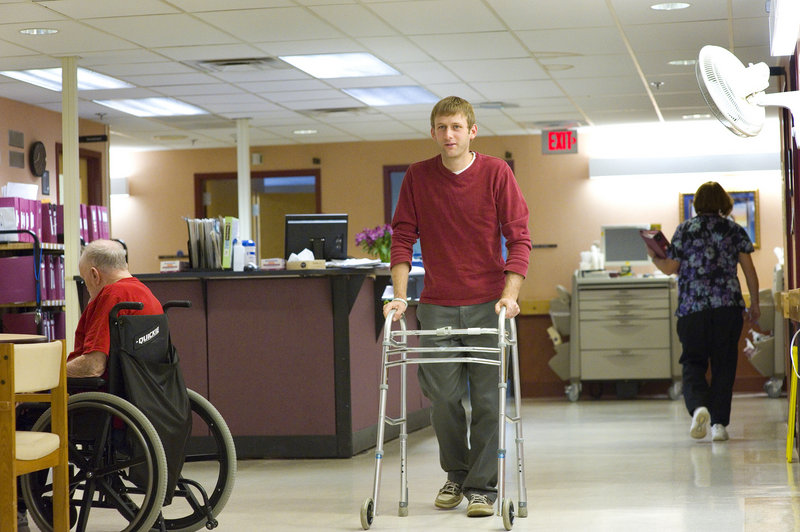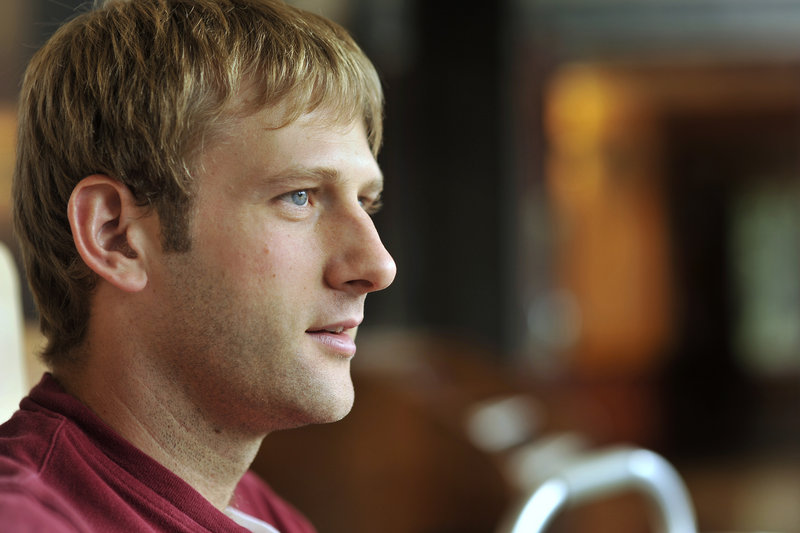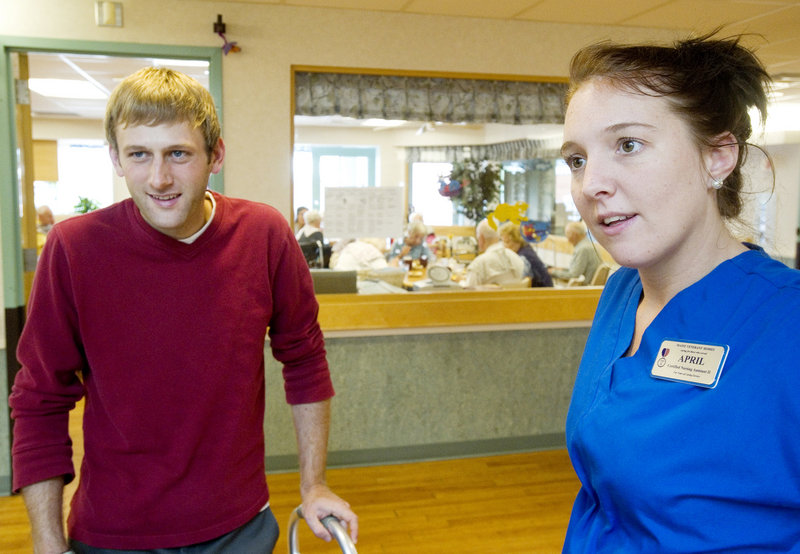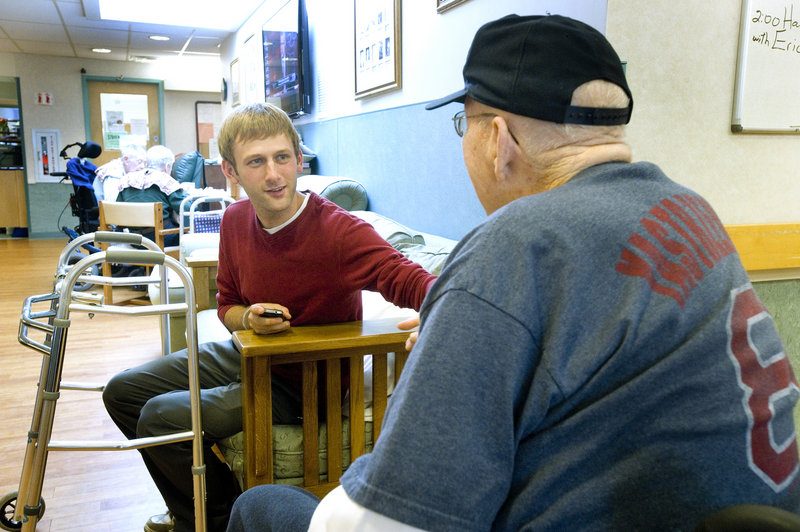SCARBOROUGH – Take away his walker and Evan Carroll looks more like the grandson of a resident at the Maine Veterans’ Home than someone who lives there.
But for eight nights, the 29-year-old architect slept in the nursing home in Scarborough, on the other side of a curtain from an ailing veteran. He ate pureed foods, took sponge baths and played bingo.
His nine-day stay, which ended Wednesday, was meant to help him better understand the needs of nursing home residents. He wants to incorporate what he learned into his work, though he doesn’t yet have any design contracts for senior housing projects.
Carroll, a Westbrook native who graduated from Roger Williams University in Rhode Island, left his job at a Portland architecture firm in March to start Bild Architecture with his wife, Sasha Salzberg, the business and marketing manager.
Recognizing the aging population of Maine — the oldest state in the nation, according to the U.S. Census Bureau — the couple decided they wanted to gear their business toward the housing needs of senior citizens. Watching their own grandparents become increasingly dependent also has influenced them.
“It’s something we could get excited about because it’s personal for us,” Carroll said Tuesday.
In June, Carroll attended the annual Maine Geriatrics Conference in Bar Harbor, where he met Marilyn Gugliucci, director of geriatric education and research at the University of New England’s College of Osteopathic Medicine.
Gugliucci runs a program in which medical school students live as nursing home residents and gain a new perspective on care for seniors. She offered to arrange for Carroll to do the same.
“Until you live there and maneuver through in a wheelchair or walker, you have no idea what it’s really like,” Gugliucci said Tuesday.
She and Carroll plan to present their findings in February at a national gerontology conference in Washington, D.C.
Carroll checked into the Maine Veterans’ Home on Sept. 13. He was given a bracelet with his name, a wheelchair and a diagnosis: left-side weakness due to a stroke.
While in the wheelchair, Carroll was allowed to use only his right arm and foot to propel himself through the halls. He had to ask for help from the nursing staff to get out of bed and to pull his pants down to use the bathroom — though he kept his boxer shorts on until the staff left the room.
Halfway through his stay, Carroll traded the wheelchair for a walker and was moved from the Alzheimer’s unit to the rehabilitation wing, where residents sat in a common area Tuesday morning reading newspapers and watching “The Price is Right.”
Carroll credited the staff for giving expert care, but said residents let him know there is something missing from their living quarters. “This isn’t home to them,” he said. “They just don’t feel like they belong here.”
That’s something he believes can be improved through architecture.
Better lighting, window trimmings and more color in the linoleum-tiled floors are some of the ideas Carroll has for making the nursing home feel cozier. He also would like to see kitchens in every wing, so residents could help prepare meals and enjoy the aroma of cooking food.
Vicki Waller, the nurse manager for the rehabilitation unit, said nursing homes are trying to shift their feel from medical to residential, and having architects like Carroll can only help.
“Instead of (residents) conforming to an environment, we’re creating an environment that’s going to make them feel a little bit better about being in a setting like this,” she said.
Staff Writer Leslie Bridgers can be contacted at: 791-6364 or at
lbridgers@pressherald.com
Send questions/comments to the editors.







Success. Please wait for the page to reload. If the page does not reload within 5 seconds, please refresh the page.
Enter your email and password to access comments.
Hi, to comment on stories you must . This profile is in addition to your subscription and website login.
Already have a commenting profile? .
Invalid username/password.
Please check your email to confirm and complete your registration.
Only subscribers are eligible to post comments. Please subscribe or login first for digital access. Here’s why.
Use the form below to reset your password. When you've submitted your account email, we will send an email with a reset code.